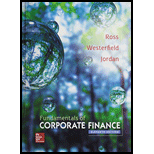
Case study:
E incorporation is a small company founded by Person T and Person J. They are the manufacturers of integral circuits to capitalize on the complex mixed-signal design technology. Recently, the company decided to include motherboards, PC peripheral devices, and other digital consumer electronics.
In addition to T and J, Person N who provided the capital of the company, became the third primary owner. Each of them owns 25% of 1 million shares outstanding.
The employees of the company and other investors are part of the shareholders, and own the remaining shares.
The company designed the new computer motherboards, which are more effective and less expensive to manufacture; but the cost incurred to design is very high and the owners are unwilling to bring other owners. Thus, ETI sold the design to an outside firm at the rate of after-tax payment of $30 million.
Characters in the case:
Company E: Manufacturers of integral circuits.
Person T: The electronic engineer and founder of the company E
Person J: The electronic engineer and founder of the company E.
Person N: The new owner of the Company E.
To discuss: The impacts of declaring extra cash dividend, and how it affects the stock price.
To determine: The impacts of declaring extra cash dividend and how it affects the value of company.
Want to see the full answer?
Check out a sample textbook solution
Chapter 17 Solutions
Fundamentals of Corporate Finance with Connect Access Card
- finance subjectarrow_forwardCould you help explain, what is the complete salary survey analysis, and ensuring the data is relevant and up-to-date? What is the job evaluation and compensation plan? How to ensure the final report is comprehensive, clearly structured, and aligned with the company vision?arrow_forwardThe maturity value of an $35,000 non-interest-bearing, simple discount 4%, 120-day note is:arrow_forward
- Carl Sonntag wanted to compare what proceeds he would receive with a simple interest note versus a simple discount note. Both had the same terms: $18,905 at 10% for 4 years. Use ordinary interest as needed. Calculate the simple interest note proceeds. Calculate the simple discount note proceeds.arrow_forwardWhat you're solving for Solving for maturity value, discount period, bank discount, and proceeds of a note. What's given in the problem Face value: $55300 Rate of interest: 10% Length of note: 95 days Date of note: August 23rd Date note discounted: September 18th Bank discount rate:9 percentarrow_forwardAll tutor giving incorrect solnarrow_forward
 Survey of Accounting (Accounting I)AccountingISBN:9781305961883Author:Carl WarrenPublisher:Cengage Learning
Survey of Accounting (Accounting I)AccountingISBN:9781305961883Author:Carl WarrenPublisher:Cengage Learning Intermediate Financial Management (MindTap Course...FinanceISBN:9781337395083Author:Eugene F. Brigham, Phillip R. DavesPublisher:Cengage Learning
Intermediate Financial Management (MindTap Course...FinanceISBN:9781337395083Author:Eugene F. Brigham, Phillip R. DavesPublisher:Cengage Learning
 Financial Reporting, Financial Statement Analysis...FinanceISBN:9781285190907Author:James M. Wahlen, Stephen P. Baginski, Mark BradshawPublisher:Cengage Learning
Financial Reporting, Financial Statement Analysis...FinanceISBN:9781285190907Author:James M. Wahlen, Stephen P. Baginski, Mark BradshawPublisher:Cengage Learning Cornerstones of Cost Management (Cornerstones Ser...AccountingISBN:9781305970663Author:Don R. Hansen, Maryanne M. MowenPublisher:Cengage Learning
Cornerstones of Cost Management (Cornerstones Ser...AccountingISBN:9781305970663Author:Don R. Hansen, Maryanne M. MowenPublisher:Cengage Learning





